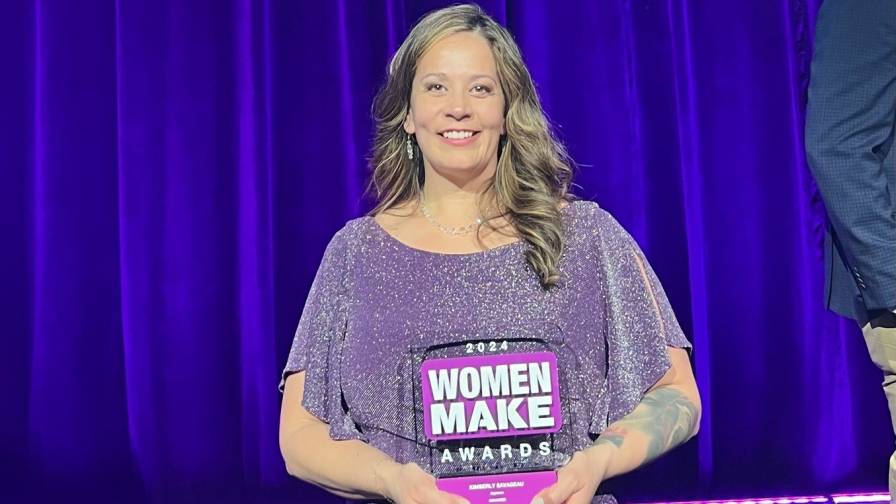Patience Needed: Lessons for Getting New Tech onto the Farm
A popular joke within the tech industry was trotted out at GAI AgTech Week in Boston, MA, speaking volumes about the continuing – but hopefully narrowing – divide between agriculture and the technologists who hope to transform it.
Here’s how the joke goes: If it takes nine months for a woman to have a baby, put nine women in a room for a month and it’s bound to go much faster.
Such is the hope of tech companies, which have a bias for fast turnarounds on product iterations and speedy adoption by buyers – ideally before their seed money runs out. But most of agriculture has an annual growing season, giving farmers their fabled “40 chances” at making a crop over a typical 40-year career. Most of them understandably are not about to risk the entirety of one of those precious and expensive seasons on a speculative technology.
“Are farmers conservative?” asked Kirk Haney, CEO and Managing Partner of the accelerator fund Radicle Growth. “Or are they pragmatic? That’s a key distinction.”
Farmers also want assurances that a technology not only will “work,” but that it will have tangible benefits for their crops – meaning tech’s fabled concept of a minimally viable product (MVP) is “not necessarily applicable” to agriculture, said Ryan Rakestraw, Venture Principal at Monsanto Growth Ventures. Extensive field trials are important, he said. Companies need to prove the value of their products.
Hope, Capital, Interest
So, can this budding union of tech and agriculture be saved?
First, plenty of hope, capital, and interest – if now just a bit hedged – remain from ag tech’s “big bang” of 2013: Monsanto’s acquisition of The Climate Corporation. While another billion-dollar “unicorn” is likely not in the immediate offing, there still was $3 billion in ag-tech funding last year even after a significant decline from $4 billion the year before, Rakestraw said.
Said Jacob Carter, Founder and CEO of Tellus Partners and a third-generation rancher, in a call for patient capital: “We’re still in the infant stages of developing this ag-tech sector.”
Second, inexpensive computer power, new sensors, and advances in machine learning – the “big three” factors driving ag tech according to Ara Nefian, Co-Founder and CTO of the aerial imagery analytics firm IntelinAir – will continue to revolutionize digital farming and precision agriculture.
And third, as these technologies continue to hurl down the pipeline, reckoning among tech companies about the unique realities of agriculture and the steps that will be necessary to get their products on the farm seem to be well underway.
Providing Farmer Value
Though their insights would hardly be novel to ag veterans, providers of precision agriculture services might well note key lessons as they seek to fortify their all-important third point on the technology triangle uniting them with farmers and tech companies.
Providing distinct value to farmers — tangible results — continues to be the single biggest driver for ag technology, said Jonah Kolb, Managing Member of Moore & Warner Ag Group, a farm management company that last year published a study on precision adoption titled “Beyond the Hype.”
Kolb recalled asking a farmer what was the single greatest technology of his career. “In-cab air conditioning,” the farmer replied, only half-jesting. This, Kolb noted, gets to the heart of “in-field benefit versus theoretical value.”
Earning endorsements from the farmer’s decision-influencers also is key, Kolb said.
Jeffrey Steen, Partner in Kachina LLC and a third-generation grower of permanent crops, observed that in California the Pest Control Adviser’s relationship with the farmer is “like your relationship with your priest or your shaman.” The same is true of ag retailers, agronomists, crop consultants, equipment dealers, and irrigation dealers, etc. “If you don’t get their recommendations,” he said, “you won’t make it onto my farm.”
The only pathway is through relationship-building, and this takes time, Kolb said. “There’s so much belly-to-belly selling in agriculture. Failing to realize how much time it takes to build relationships is one of the most common failings we see.”
As suppliers try to gain a foothold on the farm, they should start out modestly by looking for an “acreage build.” “You do beta tests all the time. So do farmers,” Kolb told the audience, composed primarily of tech types and financial people who fund them. Seek a fraction of the farmer’s acreage in year one to test new technology. Then, make a second sale: Try to get that 10%-20% up to 100%.
But Kolb warned against going for too much of an “ask,” especially in the early going. Ideally, if there’s a cash outlay by the farmer, there’s also a cash return. Is it really necessary for the farmer to invest deeply in technology?
Mohan Tavorath, Head of Data Services for International Farming Corporation, noted that all this can be very confusing for the farmer. Imagine 250 startups each telling a farmer that their technology costs only $1 per acre. Add it up and it is very expensive.
The Value of Patience
It can also induce whiplash, given the pace of change. Most tech companies profess to seek disruption, but “the difference between change and disruption is only time,” observed Geoff Kneen, R&D Licensing and New Ventures Manager for Bayer CropScience. “It if happens quickly, it’s disruption. People are just looking for rapid change.”
But they’re also looking for rapid change that’s in it for the long haul. Kolb said that in an ag-tech race between a sprinter and a marathoner, he’d pick the marathoner, but that he’d try to figure out how the marathoner could run faster.
Bottom line: Perhaps technology companies might gain most by being a bit more patient and adapting to the somewhat slower rhythms of agriculture — in other words, giving the baby a full nine months to gestate. Farming is subject to the vagaries of nature and therefore inevitably causes those who work in it to take a longer view. One panelist summarized this as the “rules of too,” as once imparted to him by a wizened cotton grower: “It’s always too hot, too cold, too wet, or too dry. But it’s never good or too bad to last too long.”
Encouraging words indeed for anyone who approaches agriculture spoiling for overnight change.






